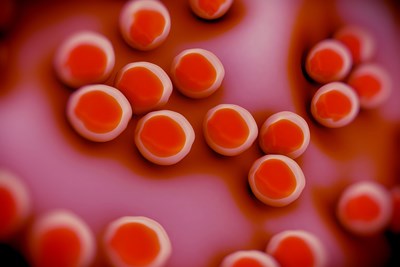The symptoms of staph infection will vary greatly depending on the type, location, and severity of your specific infection. Here's a look at the symptoms of some common types—skin infection, bacteremia, septic arthritis, toxic shock syndrome, and food poisoning.
Skin Infection Symptoms
The most common type of staph infection is a skin infection. It can appear in many different forms, such as:
- Boils: This is a pocket of pus that usually develops in an oil gland or hair follicle. Boils will typically occur under the arms or around the buttocks or groin, and the area around the infection will usually be swollen and red. The boil may break open and drain pus, which is very contagious.
- Cellulitis: Cellulitis most often occurs in the lower legs and feet. This is a staph infection that develops in the deeper layers of your skin and appears as swollen and red on the surface of your skin. Ulcers or sores may also develop, which may ooze discharge.
- Scalded skin syndrome: When you have a staph infection, the toxins that are produced may lead to a symptom called staphylococcal scaled skin syndrome. This condition usually affects newborns and small children and appears as a rash, blisters, and a fever. The blisters will break open, which will cause the top layer of skin to peel off. This will leave a raw, red surface that looks very similar to a burn.
- Impetigo: This is a very painful rash that features large oozing blisters with a honey-colored crust. Impetigo is very contagious.
Bacteremia Symptoms
Bacteremia is also known as blood poisoning, and it occurs when staph bacteria are able to enter your bloodstream. The signs and symptoms of bacteremia include low blood pressure and a fever. When this happens, it can be very dangerous, since this gives the infection access to your internal organs, such as your brain, heart, and lungs, as well as your bones and muscles.
Septic Arthritis Symptoms
This is a condition that is usually caused by an infection of staph bacteria and most often occurs in the knees, ankle, hip, wrist, elbow, shoulder, or spine. The signs and symptoms of septic arthritis include swelling in the joints, severe pain, and fever.
Toxic Shock Syndrome Symptoms
This is a very dangerous condition that usually occurs as a result of using certain types of tampons, having open skin wounds, or undergoing surgery. Toxic shock syndrome is a result of toxins being released by certain strains of staph bacteria and is characterized by a high fever, confusion, abdominal pain, diarrhea, muscle aches, rash, nausea, and vomiting. Toxic shock syndrome can be deadly if it is not treated immediately.
Food Poisoning Symptoms
One of the most common causes of food poisoning is staph bacteria, which can easily be transmitted from the food preparer’s hands to the food that is being prepared if they are not washed properly. The symptoms of staph-related food poisoning will usually come on very quickly and include nausea, vomiting, diarrhea, dehydration, and low blood pressure. However, the symptoms will usually disappear after only about half a day. This type of food poisoning will generally not cause a fever.



